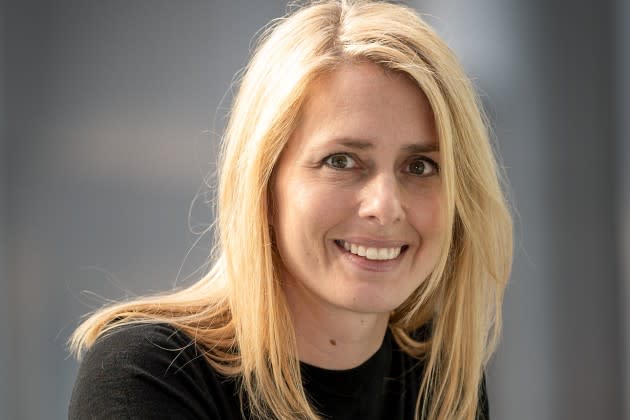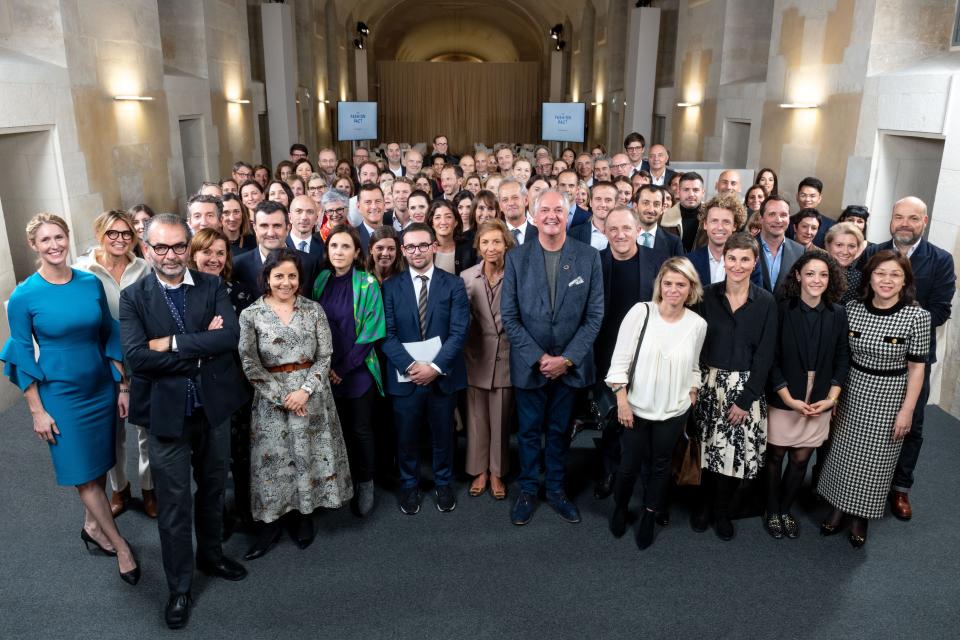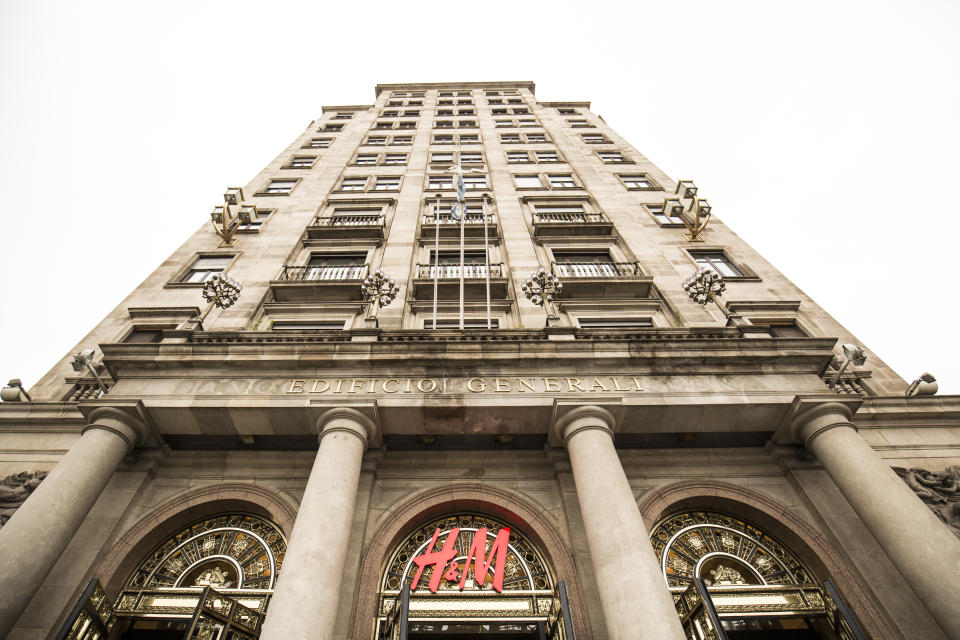H&M Group’s Helena Helmersson Named The Fashion Pact Co-Chair

The Fashion Pact, a voluntary Kering-backed climate and biodiversity initiative for fashion, revealed updates and has named a new co-chair.
As of Tuesday, Helena Helmersson, chief executive officer of H&M Group, was named co-chair of The Fashion Pact. She succeeded The Fashion Pact’s cofounder and Kering’s chairman and chief executive officer François-Henri Pinault, after the completion of his three-year term mandate. Helmersson will serve alongside co-chair Paul Polman (reelected for another three-year term) and Eva von Alvensleben, executive director and secretary general of The Fashion Pact, on the initiative’s steering committee.
More from WWD
Pinault first announced The Fashion Pact alongside French President Emmanuel Macron at the Group of Seven summit hosted by France in Biarritz in August 2019. The Kering chairman will remain on the steering committee. Upon the pact’s formal formation in 2020, H&M Group, Farfetch, Mango, Bally and El Corte Inglés were among the early signatories, with core goals spanning climate change, biodiversity loss and ocean conservation.
Since then, the Pact has charted buy-in from one-third of the industry, or 63 signatories today, representing more than 200 brands including Adidas, Inditex, Kering and H&M Group.

“The fashion industry has the power to become a force for change and I’m proud and excited to take on the role as co-chair of The Fashion Pact to continue building on the great work that has been done and jointly work on achieving our goals,” Helmersson told WWD. “Our ambition for the next three years is to scale our current focus areas, such as the current low-impact cotton project and explore the potential to extend its reach to other materials. Furthermore, we aim to set industry pathways for measuring and protecting biodiversity.”
Aligned with the Paris Agreement, The Fashion Pact ensures signatories set and maintain science-based carbon emissions reduction targets to thwart global temperature rise. In a 2020 progress update, some 80 percent of signatories said they believed the pact “accelerated” sustainability efforts within their companies.
Climate targets include achieving 100 percent renewable energy across own operations by 2030 and ensuring that 25 percent of key raw materials are lower climate impact by 2025. For ocean conservation, the goals include eliminating problematic and unnecessary plastic in business-to-consumer packaging by 2025, and ensuring at least half of all plastic packaging is 100 percent recycled content (by 2025, for business to consumer and by 2030, for business to business). For biodiversity, the goals include developing individual biodiversity blueprints by the end of 2020 (which is already completed) and supporting zero deforestation and sustainable forest management by 2025.
While DEI initiatives are not yet outlined in The Fashion Pact’s aims, the Pact has various joint initiatives to prioritize farmer and supplier stake in the global fashion conversation. One project includes a low climate-impact and regenerative farming practices project. The pilot will involve an estimated five to 15 U.S. farmers with an approximate area of 1,000 to 3,000 hectares, and with 500 to 1,000 farmers in India with an approximate area of 1,000 to 2,000 hectares total. More updates are to come this year.
In an interview with WWD, Helmersson said she wants to unify fashion toward “tighter regulations” and a “focus on emissions.”
“The Fashion Pact has already developed leading tools in this area and was one of the first players to initiate this important joint development. Building upon the actions initiated since 2019 and the renewable energy project [Collective Virtual Power Purchase Agreement], The Fashion Pact is now targeting greater progress throughout the value chain,” said Helmersson.
Currently, 12 Fashion Pact members are signed on to the CVPPA, which advances renewable energy sourcing. Tools like The Biodiversity Strategy Tool Navigator (which help fashion players develop a science-based biodiversity strategy) are available in an interactive website.
“Many fashion brands have a comprehensive climate strategy but knowing that the biggest emissions occur when sourcing raw materials and manufacturing fabric and garments, we need to increase the focus on emissions related to textile and garment production. Decarbonizing fashion’s supply chain at pace and scale will be critical for brands and players across the sector to achieve their targets,” Helmersson added.
H&M has been reporting its sustainability progress for some time, earning recent accolades in reports like those from watchdog Stand.Earth. However, the company has also beaten down greenwashing claims, including a recent class action lawsuit in the U.S., that the company ultimately won.
“Today, clear legal frameworks around sustainability communication are lacking,” said Helmersson. “We welcome stricter legislation and clearer guidance on what authorities are demanding and wish for that to be harmonized across markets…As a platform for collective action, The Fashion Pact has a role to play in understanding any upcoming regulations so that we can effectively prepare our members to comply with them. By coming together with ambitious CEO leadership, we can accelerate the change and move our industry towards a sustainable future.”

Despite its ambitions, The Fashion Pact is not an industry reporting body, as von Alvensleben made clear.
Instead, the initiative references data from Textile Exchange and Science Based Targets Initiative (SBTi), among other sources. Last year, 77 percent of The Fashion Pact members responded to Textile Exchange’s 2022 reporting benchmark. Per SBTi, well over half (or 61 percent) of Fashion Pact members have either “committed to set” science-based targets or already had their targets approved. Of those 38 reporting members, 59 percent of their total consumption comes from renewable sources.
“This data will soon be made available on our future website to be released early summer,” von Alvensleben said. “Moving forward, we are considering ways to define a relevant cadence to which we will communicate more transparently on the progress made to achieving our targets via our projects.”
That transparency extends to membership. “The number of members does not determine the number of brands or volume in total as some members will represent a group of different brands. So while the number of our members went down slightly, it is worth noting that we added members with big volumes like OTB Group and MF Brands which are bigger players, and important to make an impact at the end of the day,” said von Alvensleben, adding that several companies have pending membership.
In a recent list comparison, Asia-based Fung Group, Hermès International, Selfridge’s and Stella McCartney were no longer part of the membership.
“While we cannot comment on individual members leaving The Fashion Pact, we can share that we had to exclude one member based on disengagement. This is a first in the history of The Fashion Pact but was needed as the engagement of members is critical to achieving our goals.”
Best of WWD

